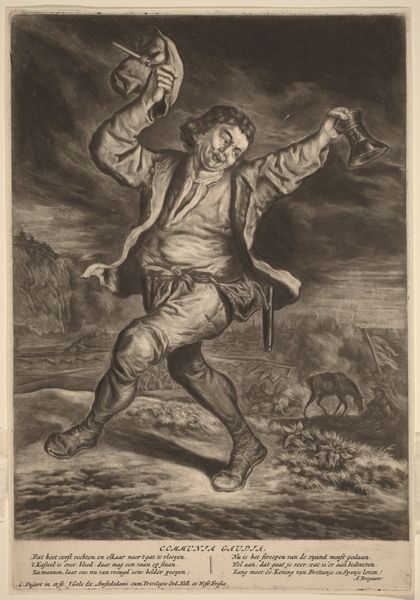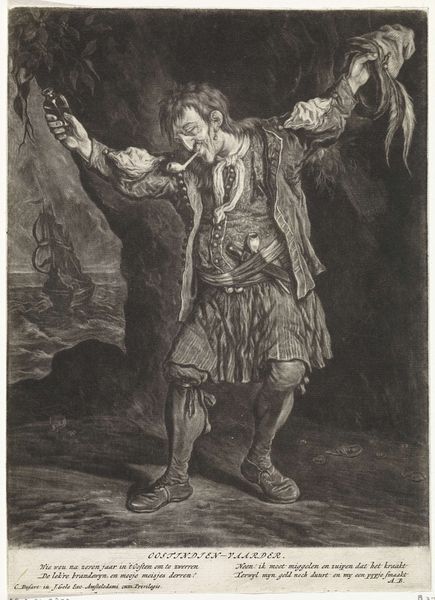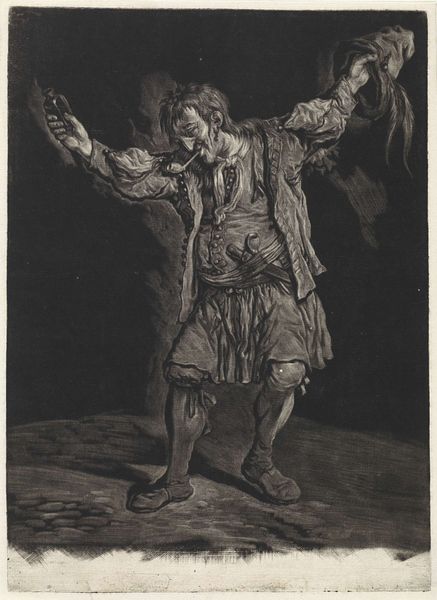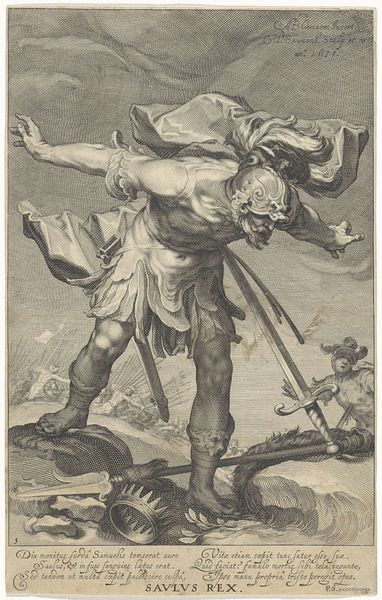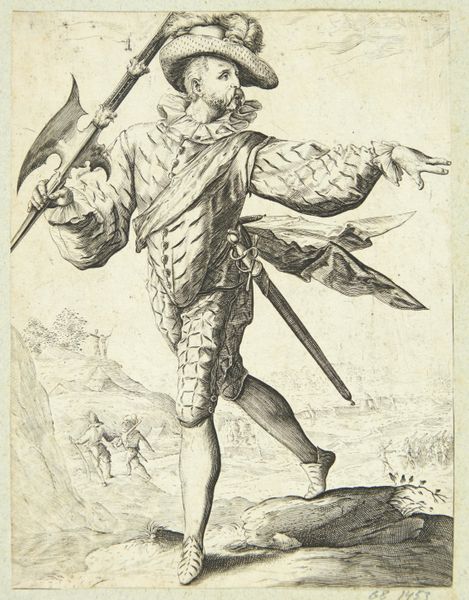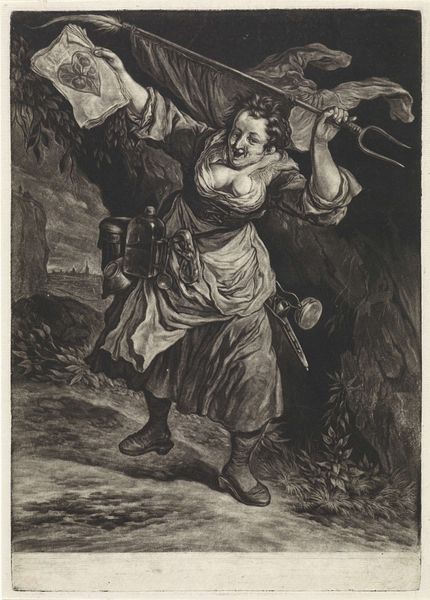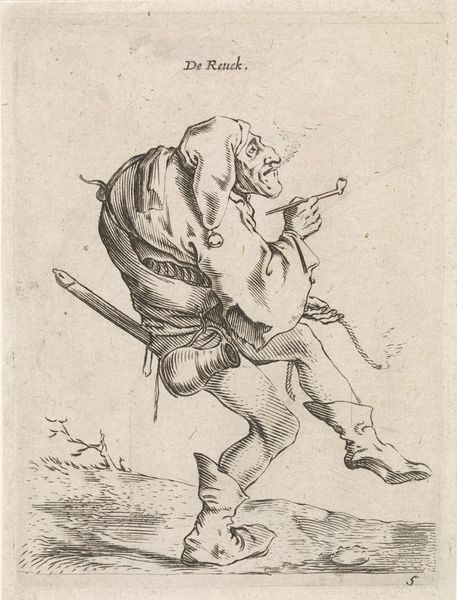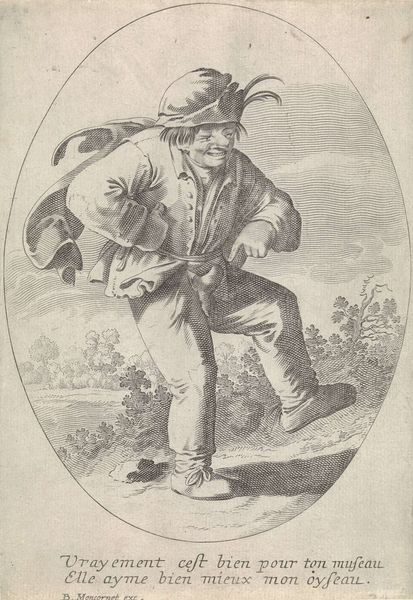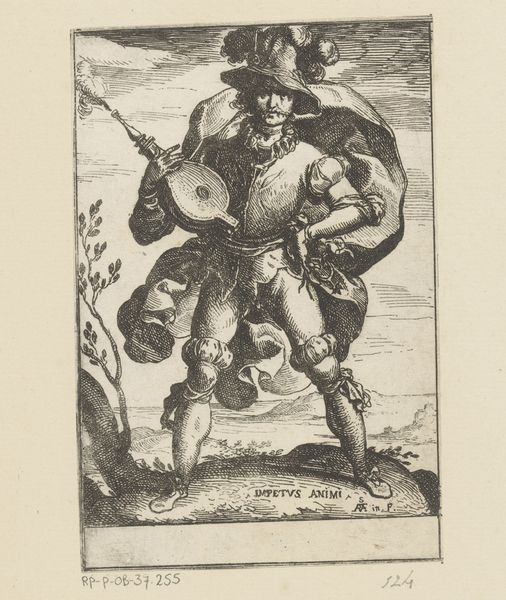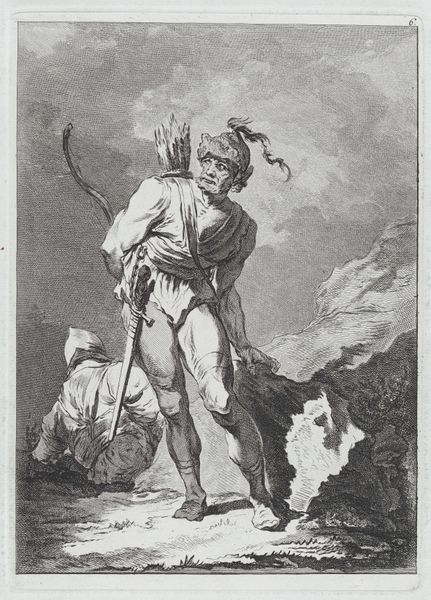
print, etching
#
baroque
# print
#
etching
#
caricature
#
landscape
#
caricature
#
figuration
#
genre-painting
Dimensions: height 260 mm, width 180 mm
Copyright: Rijks Museum: Open Domain
Curator: Immediately striking, isn't it? It’s called “The Merry Patriot,” made by Cornelis Dusart around 1695, an etching that's anything but subtle. The Rijksmuseum is fortunate to have this print in their collection. Editor: Subtle? My dear, the man looks like he's about to burst! It’s pure, unadulterated joy… or perhaps a tipsy sort of madness. Look at him leaping across the foreground. Is he about to trip over those clumps of foliage? It feels a bit dangerous, doesn't it? Curator: I think that feeling of precariousness might be quite deliberate. Dusart was known for his genre scenes and caricatures, so he often used such figures to comment on contemporary society. The "patriot" here… well, he's not your typical noble hero. He holds a bell in one hand, maybe for cheering or, more likely, making a joyful ruckus. Editor: The bell is wonderfully chaotic in its symbolism. It’s all boisterous celebration, a far cry from quiet reflection, with all its sound and fury, quite literally. Curator: Exactly. Consider the period too: the Dutch Republic was undergoing immense political change, and these sorts of depictions allowed people to playfully – and safely – critique social norms and perhaps, the rising merchant classes. See the rather elaborate landscape, it feels very 'Dutch'. Editor: And darkly comical given this central figure's raucous merriment! The landscape spreads behind him, a muted stage for his solo performance of glee or drunken oblivion, or is this his victory dance? I do wonder. It seems a bit harsh, somehow…like it wants to pull back some of that intense cheer. Curator: I tend to see his face frozen mid-laugh as deeply social—a kind of 'snapshot' of Dutch cultural life in transition, with all the anxieties and joys such transformations might evoke in the common populace. The Baroque really gave itself fully to emotion and the spectacle. Editor: Maybe…but looking again, I see an intriguing ambiguity, a touch of sardonic unease beneath all the surface commotion. Ultimately, it really gives the work such power. What starts out as just another portrait eventually pulls me right in! Curator: I agree; there is indeed power, a unique dynamism, and quite the moment caught in time.
Comments
No comments
Be the first to comment and join the conversation on the ultimate creative platform.
